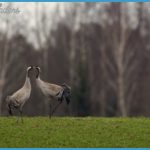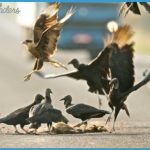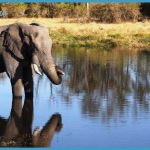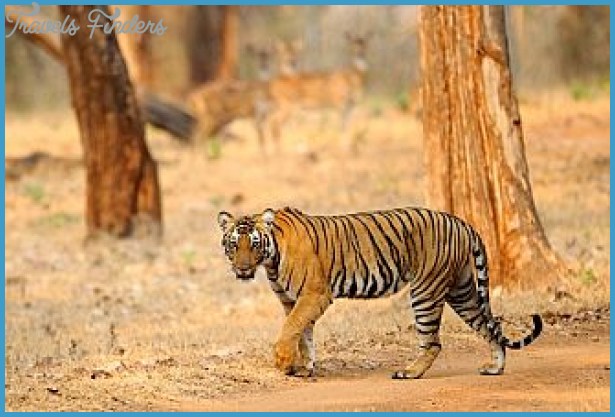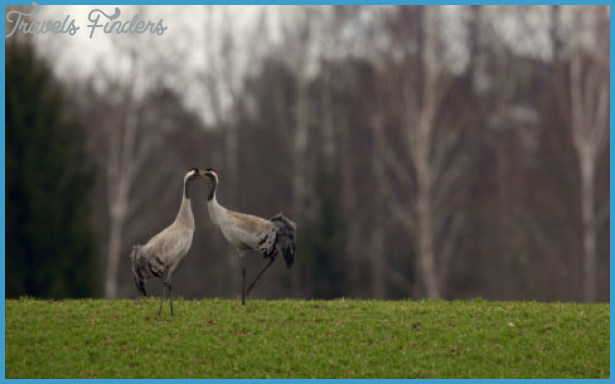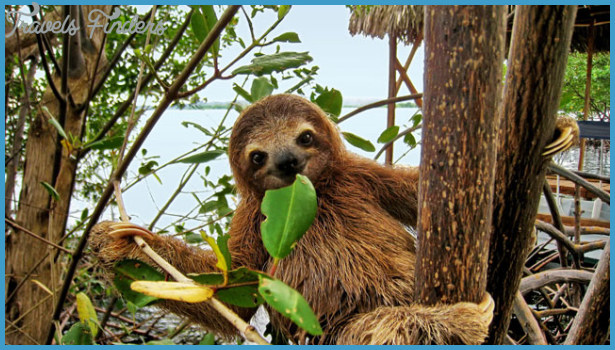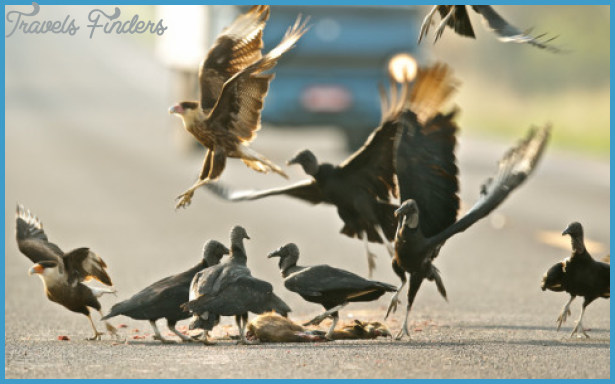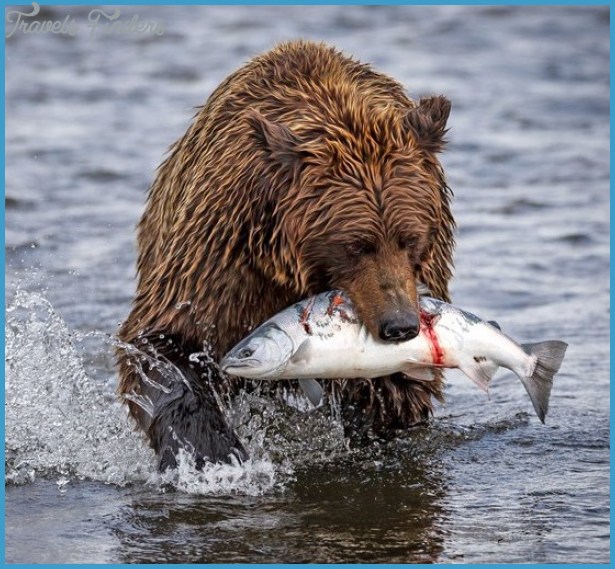A scatter of soil thrown in the air from a patch of bracken, a quiet wheezy grunt, and out on to the Bluebell-spangled turf emerges Britain’s most endearing bird a couple of metres from where I’m sitting. An adult Puffin, its multi-coloured, outsize beak glowing in the sunshine, takes a few glances at me then waddles its way like a diminutive penguin to the cliff edge where Irish Sea breakers thud into the rocks below.
It’s spring on Skomer Island, a National Nature Reserve off the west Pembrokeshire coast, and on the edge of one of its Puffin colonies the birds are cleaning out their breeding burrows. Here they don’t need major excavation; most are expropriated rabbit holes, the sort that led Alice into Wonderland. And what animal could be more suited to the tale of Alice’s Adventures in Wonderland than this waddling, grunting, penguin-like bird with such an outrageous beak? Around 6,000 pairs of Puffin breed here on Skomer and they are an absolute delight to watch.
Wildlife International Travel Photo Gallery
More Puffins are lined up nearby on the cliff edge, bowing and bobbing to each other like a line of miniature (less than 30 cm tall) up-market restaurant waiters receiving instruction from their maitre d’. Now and again, one takes flight over the waves, its short wings whirring fast like some wind-up child’s toy. At six wingbeats a second, it will use its wings to zoom underwater too, with its red-webbed feet acting as rudders, as it dashes this way and that to catch a beak-load of silvery sprats or sand eels.
Later in April, at the back of the burrow, each pair – Puffins mate for life – build a nest lined with grasses, seaweed and feathers. After the female lays a single egg, both parents take turns incubating it for about 40 days. And that’s a great time again to sit out here, the Bluebells over and Red Campion starting to dot the turf. Sit still and within a few minutes an adult Puffin will clatter to its landing spot on the clifftop, its beak loaded with ten or so small fish (apparently the world record is 80!), shake itself down to dry off, then waddle up-slope to its burrow where the growing youngster will devour the catch. It’s an experience I recalled for a feature in Country Life magazine.
It’s an experience that reminds me unfailingly of wading birds on coastal shorelines in the USA. I haven’t been to Canada so I have no idea what happens there but on US seashores it’s quite possible to sit on the sand and have wading birds such as sandpipers, tiny near-white Sanderlings and larger waders such as brown-specked Willets walk right past you within a metre or two. They seem to take no notice. Try doing that in the UK or elsewhere in Europe where seashore-feeding waders are easily spooked. You can’t get within 30 m of a Sanderling and that’s if you are very lucky. But why? I’ve heard some explanations: because there are fewer people on US beaches (not always true) or because American waders spend half the year breeding up in the Arctic where there are no people (but much the same applies to European waders). And yet hunting is a way of life for many people in the US, more so than in the UK anyway; 14 million people hunt something or other in the US, whereas it’s about 1 million in the UK. So neither of these explanations ring true.
The only way to be sure of getting up close and personal with wild animals is, of course, when they are in cages or held in captivity some other way. Well-run zoos excepted, I usually find wild animals kept like this a very depressing business and I don’t go out of my way to find them. But I had taken advice from Richard Thomas, Communications Coordinator at TRAFFIC International (the British-based wildlife trade monitoring network), because I needed to experience a market where illegal trade in birds was rife, part of a key chapter for my blog, Life with Birds: A Story of Mutual Exploitation (Whittles, 2011). He had suggested Chatuchak Market in central Bangkok (we were in Thailand on holiday). It wasn’t an experience I was looking forward to. And it turned out to be even more depressing than I had assumed.
It was a typical blazing hot Saturday afternoon in Bangkok so it was initially quite a relief to get into the (albeit airless) shade provided by the vast rows of stalls at what is reputedly one of the largest outdoor markets in the world. With over 8,000 stalls that set up here every weekend, Chatuchak Market has a reputation for selling almost everything you could ever wish to buy. Certainly there seemed to be anything and everything on sale; furniture, blogs, jewellery, CDs, any size of Buddha statue you might care to have, aquarium fish, puppies and much else. For some time, we had no idea where the bird market’ part of this great tented town might be; it wasn’t marked on our market map (yes, a map!). Maybe that was because what goes on there is illegal. But, after an hour or so of wandering, we heard some faint bird calls and songs echoing between the stalls in the near distance.
Then we found them; row after row of stallholders selling caged birds. Not just the very familiar budgies and Zebra Finches almost always bred in captivity or even aviary-reared cockatoos. But bamboo cages of illegally trapped birds taken from the Thai countryside or from much further afield. Many of these cages contained the Red-whiskered Bulbul, gorgeous brown and white birds with scarlet face-patches and a black crest. They are popular not only for their looks but also for their lively song, a double whammy that confines all too many of these common countryside birds to a life of captivity. In theory, though, they are protected by Thai law; they shouldn’t be captured and caged at all. Nevertheless, even some Thai Government officials have one in their office and point to them proudly.
There were far more exotic captives here too and many of the stallholders, knowing that what they’re doing is illegal, are keen to ban any photography. No take photo,’ they kept saying to me as I politely ignored their pleas. One stallholder took more direct action. Unimpressed by my determination to carry on, she quickly picked up a metal pole and deftly pulled down a canopy holding the last rain shower that had past that way. Doused in water – actually not at all unpleasant in these hot temperatures – I wiped my camera and carried on. Thai people are too polite to become aggressive, except in political street demos anyway.
Here were all manner of illegally trapped birds for sale: tiny owls looking abject and scared in bamboo cages so small they could hardly move; exquisite golden yellow and black orioles; a Hill Myna, glossy black with yellow ear patches and an orange beak; even a young Black-shouldered Kite, a small grey bird of prey of open savannah country, tethered to a perch. And all of them supposedly protected in Thai law against capture. There were plenty of others, many from other continents even: African hornbills, toucans and macaws, and cages full of small finches. Whether any of these had been obtained legally is questionable. From the attitude of the stallholders who didn’t want any attention, that’s pretty doubtful. What made it worse was the absence of any police or other law enforcement presence even though it’s well known that Chatuchak Market in Bangkok is the place to go if you want to buy illegal cagebirds. Passing laws to protect wild birds is easy; implementing them seemingly less so. Especially in Thailand.
It is an amazing privilege to get close to an animal in the wild. You can argue that you can get very close to a lion or a leopard if you are particularly lucky on an African safari but you would want to be seated in your Jeep, not lolling about on the savannah grassland when a great cat comes by within nudging distance. But, it is feasible to get extremely close to animals larger than the African cats, and a lot more safely. Take for instance, the Florida Manatee.


